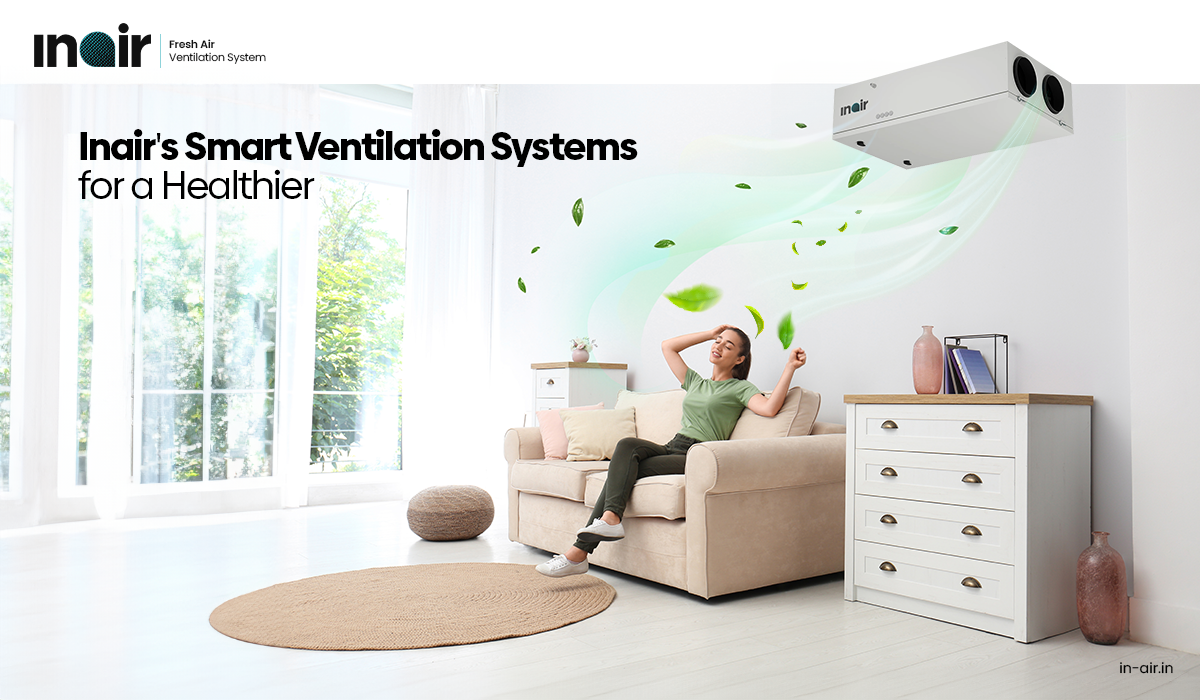The Future of Ventilation: Exploring Inair’s Innovations in Smart Technology
Introduction
As our world becomes more interconnected and technologically advanced, the concept of healthier indoor environments has taken center stage. Inair, a pioneering leader in smart automation ventilation systems, is at the forefront of this revolution. By harnessing the power of IoT and demand-controlled ventilation, Inair has elevated indoor air quality to new heights. This article delves into the science behind their innovation and their significant contributions to engineering a healthier and more comfortable tomorrow.
Demand-Controlled Ventilation: A Breakthrough Approach
Traditional ventilation systems often operate on fixed schedules, regardless of actual indoor air quality needs. This can lead to energy wastage and inadequate ventilation in certain scenarios. Demand-controlled ventilation (DCV) changes this paradigm by utilizing real-time data to adjust ventilation rates based on occupancy, indoor air quality, and environmental conditions. Inair’s adoption of DCV brings an intelligent and energy-efficient solution to the table.
The Science Behind Demand-Controlled Ventilation
At the core of DCV is a sophisticated network of sensors and algorithms. Inair’s systems are equipped with cutting-edge sensors that monitor parameters such as CO2 levels, humidity, and occupancy. These sensors provide real-time data, enabling the system to dynamically adjust ventilation rates. When CO2 levels rise due to occupancy, the system responds by increasing ventilation, ensuring a continuous supply of fresh air. Conversely, during periods of low occupancy, the system optimizes energy usage by reducing ventilation rates.
Benefits of Demand-Controlled Ventilation
Demand-controlled ventilation presents a host of benefits:
- Energy Efficiency:
By tailoring ventilation to actual needs, energy consumption is significantly reduced. This not only lowers utility bills but also contributes to a greener and more sustainable environment.
- Improved Indoor Air Quality:
DCV ensures that indoor spaces are consistently supplied with fresh air, reducing the concentration of pollutants and allergens. This leads to enhanced occupant health and well-being.
- Smart Resource Allocation:
With DCV, ventilation resources are allocated efficiently. High-traffic areas receive more ventilation, while less-frequented spaces receive just enough to maintain air quality, optimizing resource usage.
(Header 4)Smart Ventilation Systems and IoT: A Marriage of Technology and Comfort
Inair takes demand-controlled ventilation a step further by integrating IoT technology. The Internet of Things (IoT) involves connecting devices and systems to the internet, enabling them to communicate and share data. Inair’s smart ventilation systems utilize IoT to collect and analyze data from various sensors in real-time. This data is then processed by advanced algorithms to make informed decisions about ventilation rates.
IoT’s Role in Smart Ventilation
IoT-enabled smart ventilation systems offer:
- Real-Time Monitoring:
Inair’s IoT-connected sensors continuously gather data on air quality, occupancy, and environmental conditions, providing accurate insights into indoor environments.
- Remote Control:
Occupants can monitor and control ventilation systems remotely through mobile apps or web interfaces, ensuring optimal comfort and air quality even when they’re away.
- Predictive Analysis:
By analyzing historical data, smart systems can predict trends and adjust ventilation settings preemptively. This anticipatory approach maximizes energy efficiency and indoor comfort.
Inair: An Industry Leader in Smart Automation Ventilation Systems
Inair’s role as an industry leader is rooted in its innovative fusion of demand-controlled ventilation and IoT technology. Their systems embody the future of indoor air quality management, where technology seamlessly enhances occupant health, comfort, and environmental sustainability. As the demand for smart ventilation solutions grows, Inair’s contribution to engineering a healthier tomorrow becomes increasingly indispensable.
Conclusion
Inair’s dedication to science-backed innovation is transforming the landscape of indoor air quality management. Their adoption of demand-controlled ventilation and IoT technology demonstrates a deep understanding of the complex interplay between technology, comfort, and well-being. By engineering smarter, more efficient ventilation systems, Inair is setting new standards for healthier indoor environments, exemplifying the limitless possibilities that lie at the intersection of science, technology, and human well-being.







